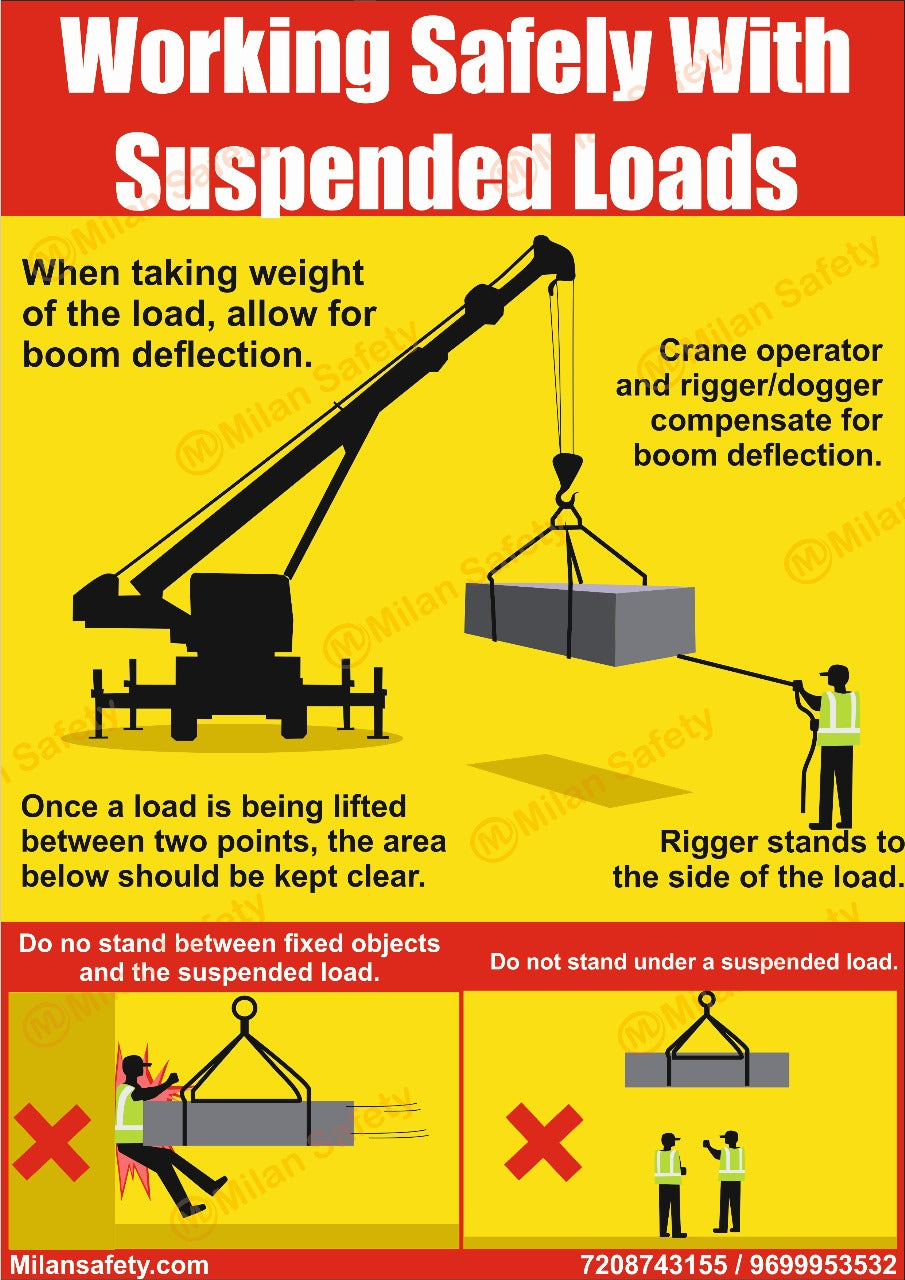Working with suspended loads is a common task in various industries such as construction, manufacturing, and shipping. While it is an essential part of many operations, it comes with significant risks. Ensuring safety when handling suspended loads requires adherence to strict protocols and best practices. This blog will delve into key safety tips, common hazards, and essential equipment for working safely with suspended loads.
Understanding the Risks
Before diving into safety tips, it’s crucial to understand the risks associated with suspended loads. These loads can be heavy and unstable, posing a danger not only to the operator but also to everyone in the vicinity. Common hazards include:
- Falling Loads: A suspended load can fall due to equipment failure, improper securing, or sudden movements, leading to severe injuries or fatalities.
- Swinging Loads: When a load swings, it can strike workers, causing injuries. This often happens due to wind or sudden movements.
- Crushing Hazards: Workers can be crushed between the load and another object if proper clearance is not maintained.
- Equipment Failures: Malfunctions in cranes, hoists, or rigging equipment can result in dropped loads.
Key Safety Tips
-
Training and Certification:
- Ensure all personnel involved in lifting operations are properly trained and certified.
- Regularly update training to cover new safety protocols and equipment.
-
Pre-Operational Checks:
- Inspect all lifting equipment before use. Check for any signs of wear and tear, and ensure that the equipment is in good working condition.
- Verify that the load does not exceed the lifting capacity of the equipment.
-
Proper Rigging:
- Use appropriate rigging techniques and equipment for the load. This includes using the correct type and length of slings, shackles, and hooks.
- Ensure that the load is balanced and secured properly to prevent shifting during lifting.
-
Communication:
- Establish clear communication protocols. Use hand signals, radios, or other communication devices to maintain constant contact between the operator and ground personnel.
- Designate a signal person to guide the operator during the lift.
-
Safe Work Zones:
- Establish exclusion zones around the lifting area. Ensure that no unauthorized personnel enter these zones during lifting operations.
- Mark these zones clearly with barriers or signs.
-
Weather Conditions:
- Monitor weather conditions continuously. Avoid lifting operations during high winds, rain, or other adverse weather conditions that can affect stability.
-
Load Stability:
- Lift the load slowly and steadily. Avoid sudden movements or jerks that can destabilize the load.
- Pause lifting operations if the load starts to swing or becomes unstable.
-
Regular Maintenance:
- Perform regular maintenance on all lifting equipment. Follow the manufacturer’s recommendations for service intervals and procedures.
- Keep detailed records of inspections and maintenance activities.
Essential Equipment
-
Cranes and Hoists:
- Choose the right type of crane or hoist for the job. Mobile cranes, tower cranes, and overhead cranes each have specific applications and limitations.
-
Slings and Rigging Gear:
- Use high-quality slings made from wire rope, chain, or synthetic materials. Inspect them regularly for damage or wear.
- Utilize appropriate rigging hardware such as shackles, hooks, and spreader bars.
-
Safety Harnesses and Lanyards:
- Equip personnel with safety harnesses and lanyards when working at heights or in positions where they could fall during lifting operations.
-
Personal Protective Equipment (PPE):
- Ensure that all workers wear appropriate PPE, including hard hats, safety boots, gloves, and high-visibility vests.
Conclusion
Working safely with suspended loads is critical to prevent accidents and injuries. By following these safety tips, using the right equipment, and maintaining rigorous training and maintenance protocols, you can minimize risks and ensure a safer working environment. Remember, safety is a shared responsibility, and everyone on the worksite must be vigilant and proactive in upholding safety standards.
Stay safe and prioritize safety in every lifting operation!
